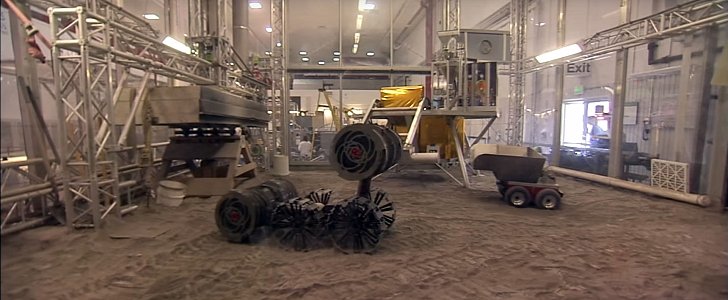I don't know if you've noticed, but Mars keeps popping up in the news more often than ever. It looks like humankind has set its crosshairs on the Red Planet and there's very little it can do to hide. That's what happens when you're the size of a planet.
In case you've somehow managed to miss it, NASA currently has an exploration rover on Mars called the "Curiosity." The nosy little bugger has been roaming the surface of the planet for quite a while now, taking periodic selfies and other hi-res pictures of its surroundings and making us all think of Total Recall while doing it.
It seems to have had an even stronger effect on Elon Musk, though. The Tesla Motors and, more relevant in this case, SpaceX CEO has just announced his plans of sending one million people to Mars before the end of the next decade, and we all know Musk doesn't joke with this kind of things.
It's unclear yet where Mr. Musk thinks he can find one million volunteers for a mission that would surely seem like suicide for most, but he's taking it one step at a time. The hardest part will be convincing the first 100, as that's the capacity of the craft envisioned by the CEO to make the 55 million kilometers trip (at minimum).
But until Musk can get his - let's call it "ambitious," and not "exaggerated" - project rolling, NASA has other plans in store. It has been working on a vehicle that can harvest Martian resources that would later be turned into useful materials that could make life over there sustainable. Well, you know, as long as you don't need oxygen or water.
The Regolith Advanced Surface Systems Operations Robot (RASSOR) is ideal for digging up the Martian soil and scooping some of those presumably valuable minerals and other components its supposed to contain. What happens with them afterward is something that NASA will probably reveal at a later stage. Unlike Musk, the National Aeronautics and Space Administration is more cautious when making future predictions.
You can watch the RASSOR in action below, during its test inside a research facility. The design is thought out so it can work in low-gravity conditions by having the two bucket drums counter-rotating, thus providing near-zero horizontal and minimal vertical net reaction force. But, surely, having a machine that can dig up ground is hardly the most difficult part of colonizing a planet. It's a start, though.
It seems to have had an even stronger effect on Elon Musk, though. The Tesla Motors and, more relevant in this case, SpaceX CEO has just announced his plans of sending one million people to Mars before the end of the next decade, and we all know Musk doesn't joke with this kind of things.
It's unclear yet where Mr. Musk thinks he can find one million volunteers for a mission that would surely seem like suicide for most, but he's taking it one step at a time. The hardest part will be convincing the first 100, as that's the capacity of the craft envisioned by the CEO to make the 55 million kilometers trip (at minimum).
But until Musk can get his - let's call it "ambitious," and not "exaggerated" - project rolling, NASA has other plans in store. It has been working on a vehicle that can harvest Martian resources that would later be turned into useful materials that could make life over there sustainable. Well, you know, as long as you don't need oxygen or water.
The Regolith Advanced Surface Systems Operations Robot (RASSOR) is ideal for digging up the Martian soil and scooping some of those presumably valuable minerals and other components its supposed to contain. What happens with them afterward is something that NASA will probably reveal at a later stage. Unlike Musk, the National Aeronautics and Space Administration is more cautious when making future predictions.
You can watch the RASSOR in action below, during its test inside a research facility. The design is thought out so it can work in low-gravity conditions by having the two bucket drums counter-rotating, thus providing near-zero horizontal and minimal vertical net reaction force. But, surely, having a machine that can dig up ground is hardly the most difficult part of colonizing a planet. It's a start, though.






